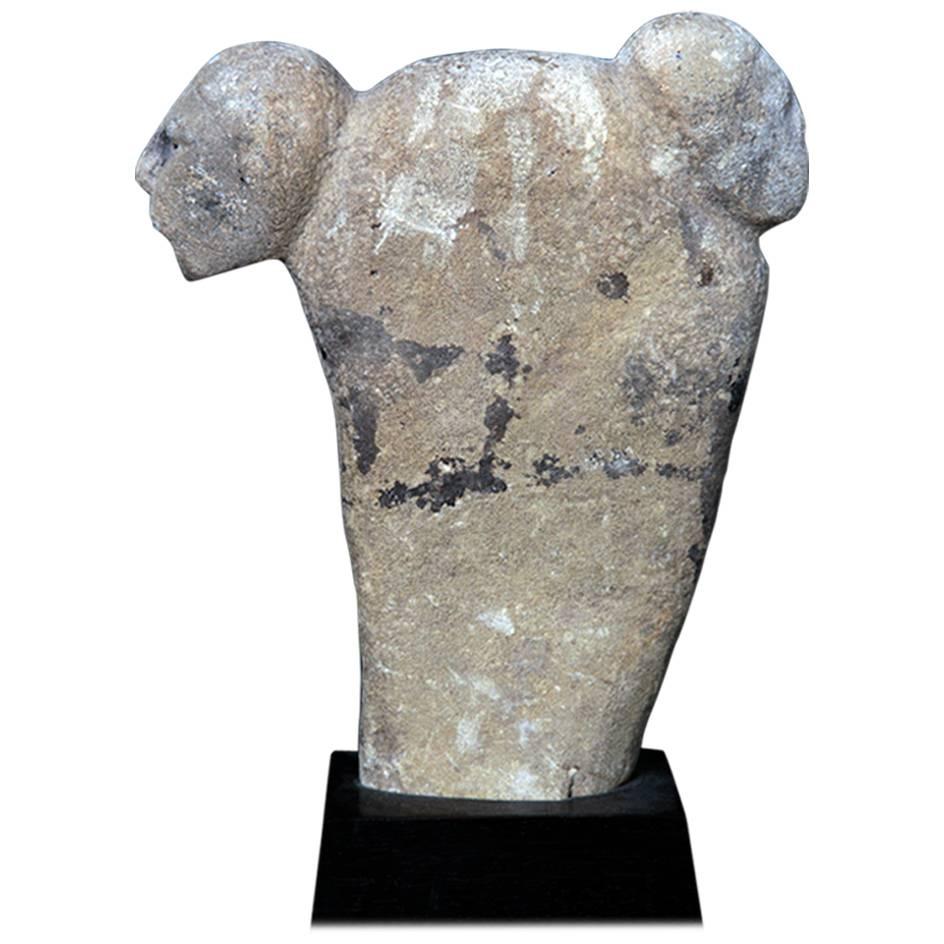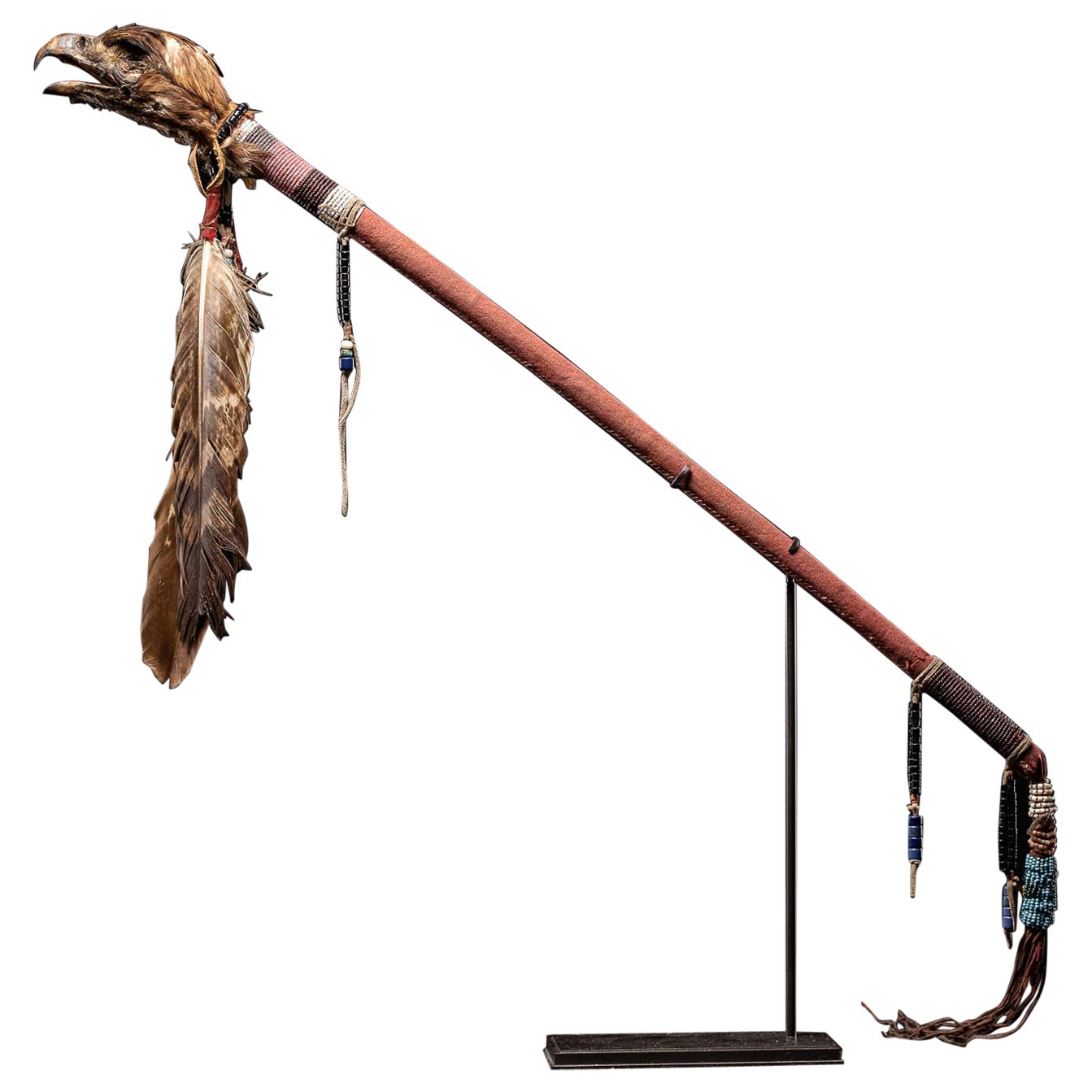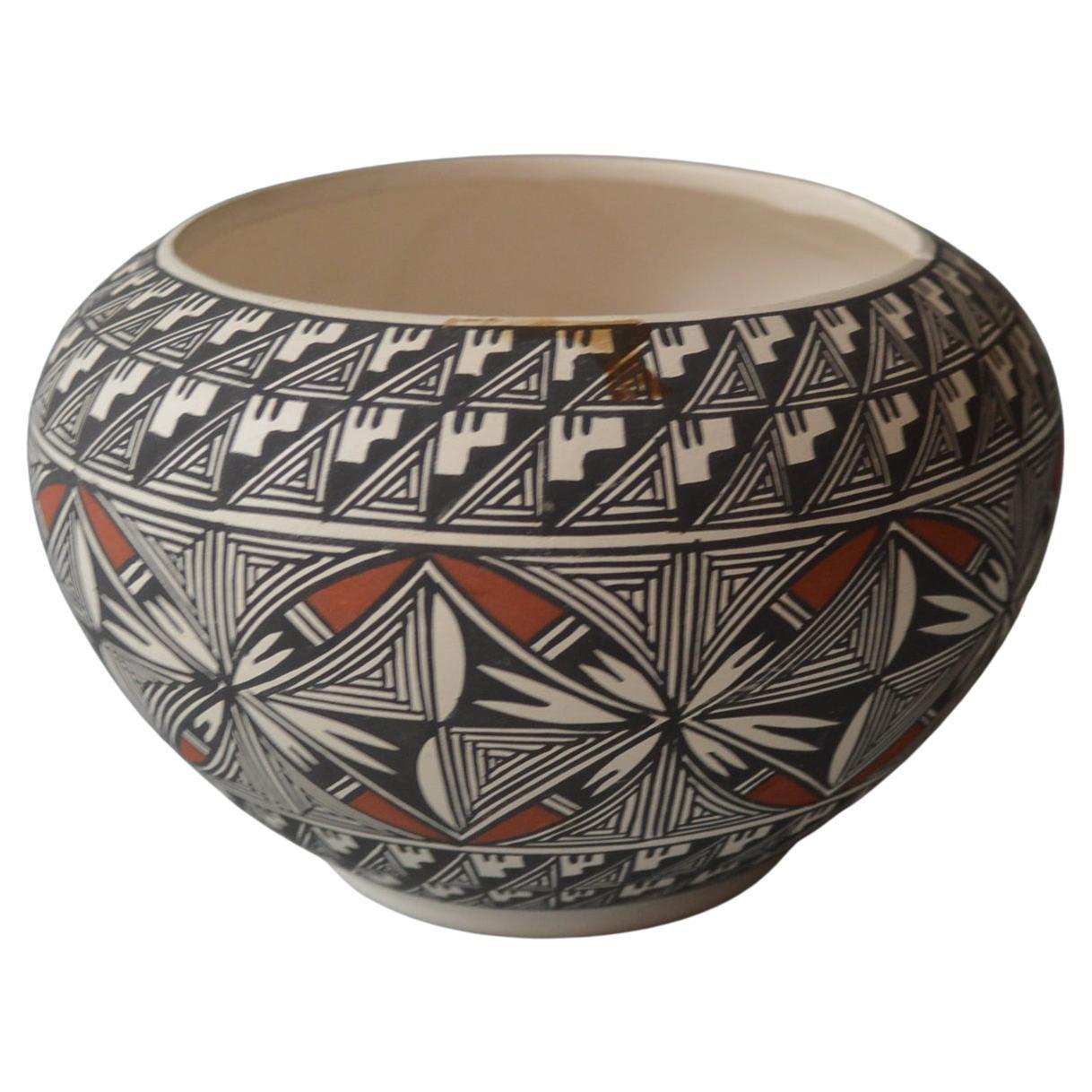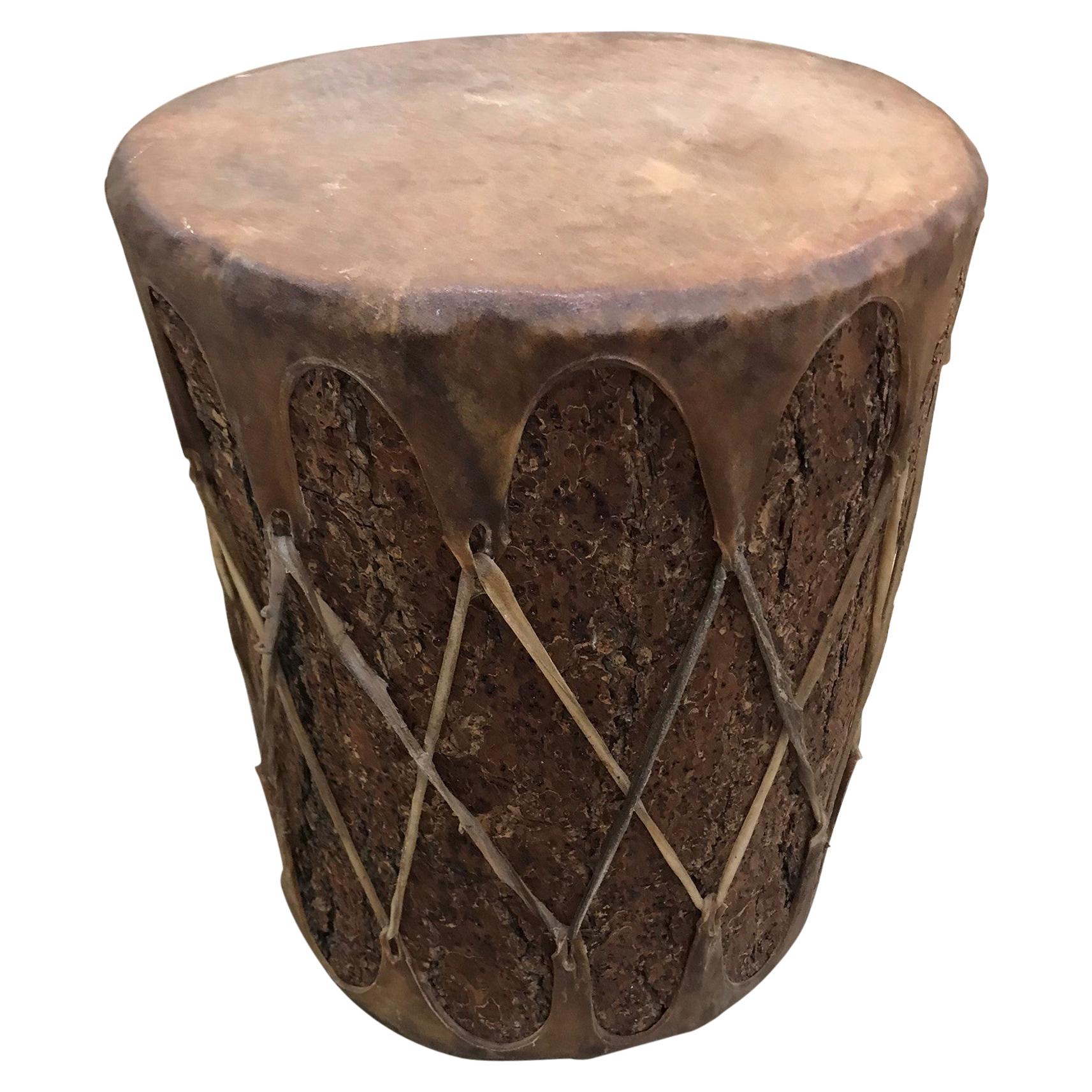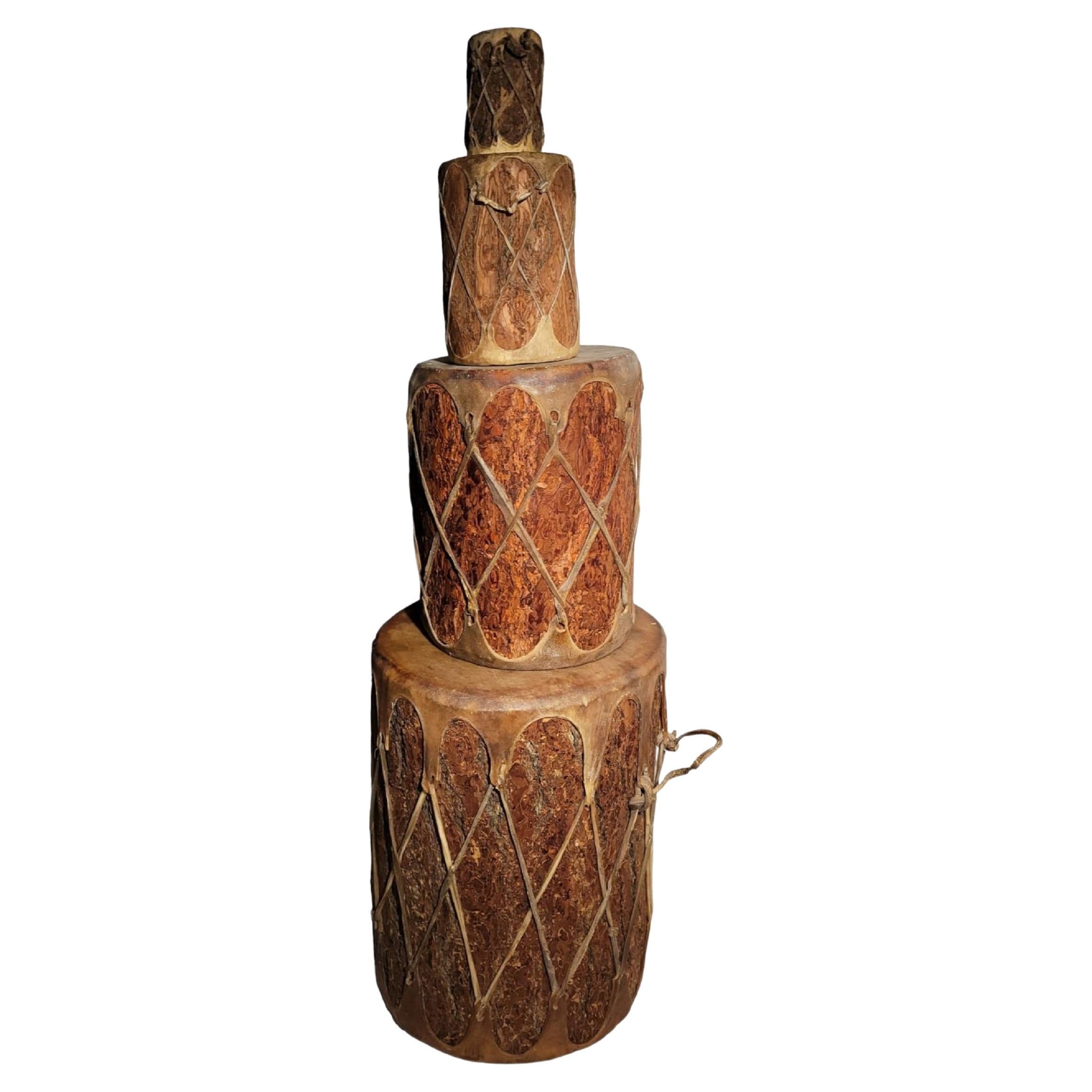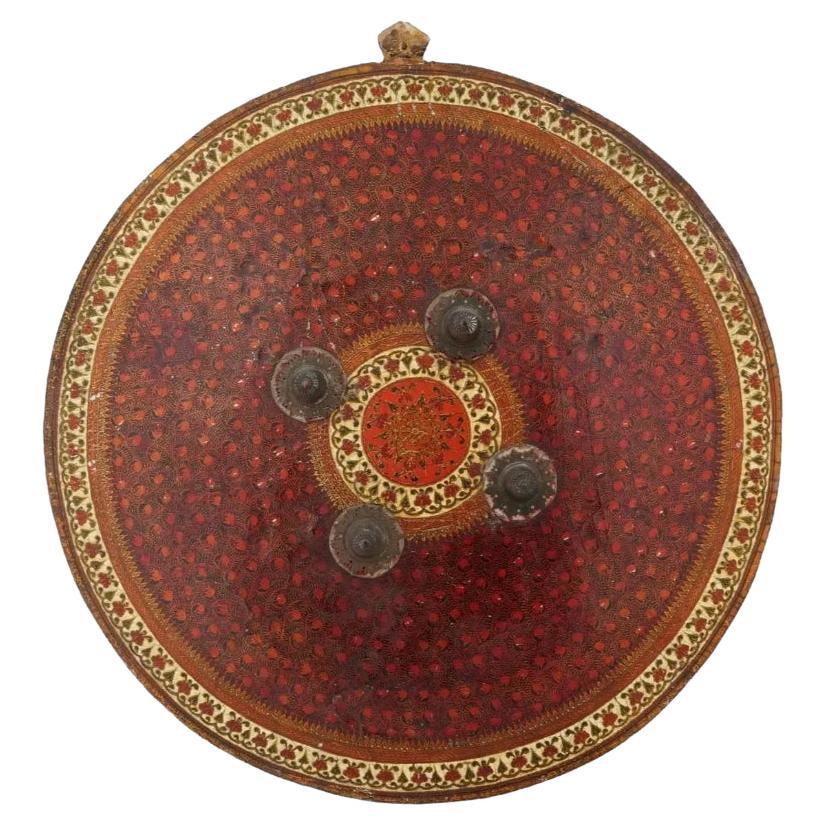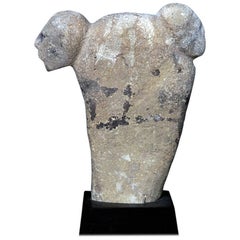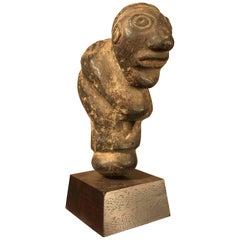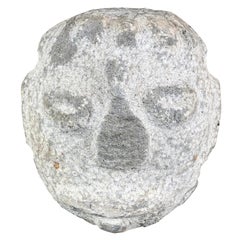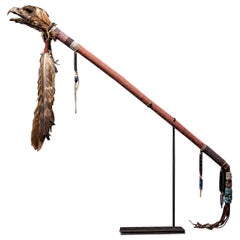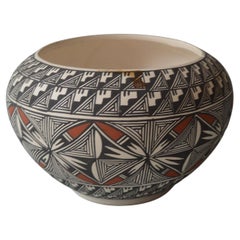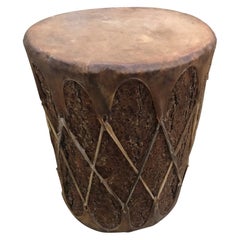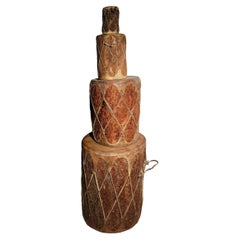Articles similaires à Fine America’s Chieftain Ceremonial Figure
Vous voulez plus d'images ou de vidéos ?
Demander au vendeur plus d'images ou de vidéos
1 sur 19
Fine America’s Chieftain Ceremonial Figure
À propos de cet article
Pre-Columbian style , Hispaniola, Arawak Peoples, Taino Native Indians
This is a finely carved Taino Cacique Chief's hand carved hard wood figure- a superb ancestor style ceremonial sculpture from the Arawak Peoples of the Greater Antilles Islands. It comes from a Florida collection. We will include a custom display base as shown.
This figure was made from a single piece of wood, representing an anthropomorphic figure with sculptured head and finely engraved with a large Cacique face and linear motifs on the head, chest, and hands. In ancient times similar would have been revered by the a principal practitioner of the cohoba ritual by the Taino's. circa 1200-1550 A.D.
While the precise ancient function of such objects remains somewhat a mystery- they continue to impress us with their bold abstract form and magical associations.
In the seminal book Taino, Pre-Columbian Art & Culture from the Caribbean published by the El Museo del Barrio, ancient figures and duho are discussed at length as private power-objects used in egalitarian tribes and used in public ritual to legitimize the hierarchical social structure of complex chiefdoms. Please also refer to the excellent publication March 1994 seminal article Tribal Arts: The Sculptural Ancestry of the Taino- masterpieces from the Pre-Columbian West Indies.
This remarkable sculpture includes a Zemi figure face which was meticulously incised with round deep-socketed eyes, prominent nasal cavities, drilled ear lobes possibly for feather fetishes, wide open mouth, and lobed ears. Some scholars find such scarifications relate to ancestral and/or fertility myths.
An ancient carved version of this quality and size would have belonged to a chieftain -caciques- or ranking member of the royal household. Although Taino left no written documents, Spanish settlers did record native practices and one account refers to special structures in which chieftains stored their Trove of important ceremonial carvings. The Taino believed in existence of afterlife and Shamanic ability to communicate with the dead. This remarkably evocative work reminds us to peak into ancient splendors of Taino civilization.
Dimensions: 8.25 inches high and 2.25 inches wide
Hand carved.
Provenance: Old Florida collection.
Taino history:
The Taino flourished from 1200-1500.
When Columbus arrived in America, the first people he encountered were the Taino People- inhabitants of the islands of the northern Caribbean Sea, known as Hispaniola. They were Arawakan-speaking people who at the time of Christopher Columbus’s exploration inhabited Cuba, Jamaica, Hispaniola (Haiti and the Dominican Republic), Puerto Rico, and the Virgin Islands. Once the most numerous indigenous people of the Caribbean, the Taino may have numbered several million at the time of the Spanish conquest in the late 15th century.
Their highly developed belief system focused on zemi ancestor or god worship. A zemi was the physical manifestation of a god, spirit or ancestor. The chieftain -caciques- encouraged ancestor worship and were often deified after death. The religious leaders or shamans were thought to be able to communicate with the souls of the dead when intoxicated by the hallucinogenic cohoba. A preoccupation with death is evident in many Taino art-forms and partly explains the prevalence of zoomorphic images. Bats, owls and frogs were all popular motifs and were regarded as harbingers of life after death. The Taino believed that the dead could be reborn in animal form and some believe animals were their earliest ancestors in Taino creation myth. hence we find their zoomorphic sculptures as combinations of human and animal forms particularly provocative and great conversational art. The creator god was known as Yúcahu Maórocoti, encouraging growth of staple foods, like cassava. The goddess was Attabeira, who regulated and dominated over water, rivers, and seas.
Their contribution to the Spanish includes Indian corn, tobacco, rubber balls to unique art and artifacts, plus a new vocabulary. Importantly, the Taino lasting effects on Western civilization, though through brief contact, was an important and lasting one.
Lifetime guarantee of authenticity: All of our works of art come with our Lifetime Authenticity Guarantee.
.
- Dimensions:Hauteur : 20,96 cm (8,25 po)Largeur : 5,72 cm (2,25 po)Profondeur : 5,08 cm (2 po)
- Style:Précolombien (Dans le style de)
- Matériaux et techniques:
- Lieu d'origine:
- Période:
- Date de fabrication:20th Century
- État:Usure conforme à l'âge et à l'utilisation.
- Adresse du vendeur:South Burlington, VT
- Numéro de référence:1stDibs : LU1289245167122
À propos du vendeur
5,0
Vendeur Platine
Vendeurs premium dont la note est supérieure à 4,7 et le délai de réponse de 24 heures maximum
Établi en 1990
Vendeur 1stDibs depuis 2015
2 374 ventes sur 1stDibs
Temps de réponse habituel : 1 heure
- ExpéditionRecherche du devis...Expédition depuis : South Burlington, VT
- Politique des retours
Certaines parties de cette page ont été traduites automatiquement. 1stDibs ne garantit pas l'exactitude des traductions. L'anglais est la langue par défaut de ce site web.
Garantie d'authenticité
Bien qu'il soit peu probable que la situation se présente, dans le cas où vous rencontreriez un problème d'authenticité d'un article, contactez-nous dans un délai d'un an pour obtenir un remboursement intégral. DétailsGarantie de remboursement
Si votre article n'est pas conforme à la description, est endommagé pendant le transport ou ne vous est pas livré, contactez-nous sous 7 jours pour obtenir un remboursement intégral. DétailsAnnulation sous 24 heures
Vous disposez d'un délai de 24 heures pour annuler votre achat sans motif.Des vendeurs professionnels agréés
Nos vendeurs de renommée mondiale doivent respecter des normes strictes en matière de service et de qualité, afin de préserver l'intégrité de nos fiches produit.Garantie d'alignement des prix
Si vous constatez qu'un autre vendeur a mis en vente le même article à un prix inférieur sur un autre site, nous nous alignerons sur ce prix.Livraison en toute confiance à l'international
Notre réseau de transporteurs de premier ordre propose des options d'expédition spécialisées dans le monde entier, y compris des livraisons personnalisées.Plus d'articles de ce vendeur
Tout afficherTalisman de chasse au buffle en pierre des plaines de l'Amérique ancienne
Talisman de chasse au bison en forme de sabot de bison avec tête et queue à l'effigie d'un être humain, granit, 1800-1900.
Dimensions : 12 pouces de haut et 9,5 pouces de large,
C...
Catégorie
Antiquités, XIXe siècle, Américain, Art amérindien
Matériaux
Granit
Massive rivière Columbia Pre Contact Carved Stone Nine Effigies Ceremonial Mortar
De la région nord-ouest du fleuve Columbia, en Amérique du Nord, provient ce bol cérémoniel ou mortier en basalte, substantiel et unique, sculpté à la main, qui possède neuf (9) tête...
Catégorie
Antiquités, 15e siècle et avant, Américain, Amérindien, Art amérindien
Matériaux
Pierre
Ancienne pipe américaine en pierre « d'éffigie humaine », période Woodland
Effigie humaine préhistorique de l'Amérique ancienne, pipe en pierre, période des bois, 2500 ans avant J.-C.
Anciennement dans la Collection Harold S, Amboy, Indiana (photo)
Toute...
Catégorie
Antiquités, 15e siècle et avant, Américain, Art amérindien
Matériaux
Pierre
4 800 $US Prix de vente
43 % de remise
Tête d'homme amérindienne ancienne en granit sculpté à la main
Cette effigie unique d'une ancienne tête en pierre de granit sculptée à la main, attribuée au peuple Yokuts, nous vient d'Amérique du Nord. Elle a été collectée dans un ranch privé e...
Catégorie
Antiquités, XIXe siècle, Américain, Art amérindien
Matériaux
Argile
Sculpture américaine en pierre féminine « Empil humain », Tennessee, 1000 av. J.-C.
Statue de femme à effigie humaine amérindienne, site de Holliston Mills, Tennessee, grès, vers 1000 ADS.
Dimensions : 11.75 pouces de hauteur et 3.75 pouces de largeur 5.75 de diamè...
Catégorie
Antiquités, 15e siècle et avant, Américain, Art amérindien
Matériaux
Grès
Effigie de tête humaine en pierre naturelle ancienne d'Amérique du Nord Sculpture
Cette effigie unique de "tête humaine" en pierre naturelle provient de l'Amérique du Sud-Ouest. Il a été découvert dans la région de Tesuque au Nouveau-Mexique en 1960. Il s'agit d'u...
Catégorie
20ième siècle, Américain, Art amérindien
Matériaux
Grès
Suggestions
Amérindiens Indiens des plaines Chef de cérémonie ;
Original Ceremonial Chief Staff from beginning 20th C. Feathers have been replaced at a later date.very rare item ;
Catégorie
20ième siècle, Art amérindien
Matériaux
Bois de feuillus
Vintage Laguna Pot Native American Pueblo
Vintage Laguna Pot Native American Pueblo
Finement peinte avec des motifs géométriques linéaires
Période 1970 signée sur la base R Reano
Condit Bon
Catégorie
20ième siècle, Américain, Art amérindien
Matériaux
Poteries
Tambour indien de cérémonie du XIXe siècle
Ce tambour fantastique, fait à la main et recouvert d'écorce, a le revêtement d'origine et est en excellent état. A une magnifique patine d'ancienneté.
Catégorie
Antiquités, XIXe siècle, Américain, Adirondack, Art amérindien
Matériaux
Bois, Cuir
1 196 $US Prix de vente
20 % de remise
Collection de quatre tambours indiens de cérémonie Pueblo
Ensemble de quatre tambours de cérémonie amérindiens
Le plus grand tambour - 15 de haut x 12 de diamètre
Deuxième plus grand diamètre - 8 x 10 haut
Troisième plus grande - 6 haut 4...
Catégorie
Début du 20ème siècle, Américain, Adirondack, Art amérindien
Matériaux
Cuir, Bois
1 516 $US Prix de vente
20 % de remise
Grand bouclier de cérémonie indien en papier mâché (Dhal)
Grand bouclier de cérémonie indien en papier mâché de type Dhal. Le bouclier Dhal, rond et légèrement incurvé, doté de quatre bossages métalliques, est richement décoré d'un motif ry...
Catégorie
Antiquités, XIXe siècle, Inconnu, Art amérindien
Matériaux
Papier
Bolo Tie Vintage Native American Navajo Sterling Turquoise
Une belle et grande cravate Bolo Navajo en argent sterling avec turquoise bleue et verte.
vers les années 1960.
Avec une cravate en cuir noir tressé et des pointes en argent et en t...
Catégorie
20ième siècle, Américain, Art amérindien
Matériaux
Argent
